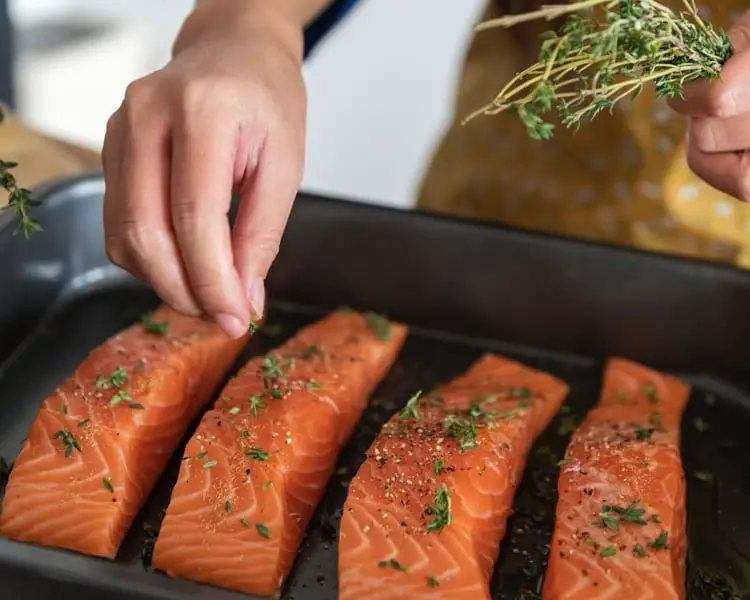How To Meal Prep For The Carnivore Diet

As an Amazon Associate we earn from qualifying purchases made on our website. If you make a purchase through links from this website, we may get a small share of the sale from Amazon and other similar affiliate programs. You can read our complete legal information for more details. By using this site, you agree the information contained here is for informational purposes only. For specific medical questions, consult your doctor. NO information on this site should be used to diagnose, treat, prevent or cure any disease or condition.

Meal prep has been a huge time saver and a major help in being able to maintain discipline throughout the week. When I have meals ready to go I’m less likely to go out and buy some garbage or snack on something that’s not carnivore approved. Plus the money-saving part is crucial!
In this post, I’m going to share the basics of what I do in the morning to prep my meals for the remainder of the day as well as provide the cooking and storage items I use.
First off, why meal prep? Because chances are where you work doesn’t have a BBQ or stove in their kitchen. Kudos if they do, nothing like a carnivore friendly environment.
Second, when you purchase your weekly rations of meat you are heavily invested in the process and wasting meat is a carnivore crime. When your fridge is stocked full of meat you best be eating it all.
There is nothing worse than wasting good meat.
By prepping your daily meals you are essentially forcing yourself to eat in and not go out during lunch or dinner. This saves money and time in the long haul and eliminates any deviation from your carnivore plan.
My meal prep plan is a daily exercise as I usually don’t do a two, three or four day prep. The reason being is that I prefer my meat fresh and eating 2-3 day old burgers is just not as tasty but then again do what works for you.
Let’s dive into my meal prep items I use to cook and store meat as well as what I use to bring my lunch to work.

Pans and Skillets
I use two highly affordable skillets. One is small and has a Teflon coat which I can only assume is not very healthy, actually, now I know it’s not healthy as there is an eye-opening documentary on it. The other is a large skillet with ceramic coating which may be a better option.
Soon I will be upgrading to ceramic.
Skillets are of major concern when it comes to health as Teflon, (nonstick coatings), aluminum, and certain metals can harm the human body. There have been reports of hormone disruption and other health-related challenges. Here is a quick list of presumed safe skillets:
- Cast Iron
- Ceramic
- Glass
- Stoneware
This is the gold standard of ceramic skillets. The Le Creuset Enameled Cast Iron is a beast. If you need to upgrade this it!

Storage Containers
My storage containers are the large Pyrex glass containers which can easily hold 2 pounds of ground beef. You probably only need three or four. I generally use them to store beef, bacon, and sometimes cooked salmon.
Here is a link to the Pyrex Glass containers.

Lunch Storage Container
I’d prefer to use the Pyrex glass containers for lunch but they are just not durable enough and the top falls off easy so I had to bight the bullet and go with a plastic container.
Right now I use the large Rubbermaid container and it’s perfect, aside from being made of plastic.
Here is a link to the Rubbermaid container I use.


Hamburger Press
This one is a game-changer and I’m not referring to the vegan propaganda film! Get a hamburger press off the bat as it will save you so much time and it’s adjustable so that you have the desired burger thickness every time. I have one that is from Williams Sonoma and it works really well.
Here is the quick link to purchase the Hamburger Press!

Meal Prep Routine
I buy my ground beef in two-pound packages from my local butcher, (which is sustainably farmed and grass-fed for $7/pound), and it fits nicely in the Pyrex containers.
When I begin my prep I’ll open a fresh package of ground beef and put in the container. Next, I’ll get my two skillets, one small and one large. The small is for cooking eggs and the big is for the burgers. By this time I’ll have the stove on and two grills firing at half, on my stove it’s a 3 on the dial.
I’ll put about 2 tablespoons of butter in the small skillet and add three of four eggs as soon as the butter is liquefied. Meanwhile I get the burger press out and press 12 burgers.
By this time my pans are warm and I’ll put 6 burgers in the skillet and add some salt to each one. I’ll set the cooking clock for 3 minutes.
As soon as the three minutes are up I’ll flip the burgers and then cook the other sides for three minutes.
Also, I’ll look at the eggs, and if they look ready I’ll add them to my big breakfast bowl. I’ll add some extra salt to the eggs as well. I like to keep my eggs a little undercooked, sunny side up.
I just feel it’s better to have the yolks less cooked which in turn makes them more bioavailable and nutritious. Gotta get those K vitamins!
By now the six burgers are cooked and ready. I will drop those in the bowl with the eggs and lightly mix them together. It sounds weird but I just like the mixture of the eggs and burgers. Totally not necessary if you prefer eating them separately.
In the meantime, I’ve put the remaining 6 burgers in the skillet, added some salt to each one, and set the timer for 3 minutes. While waiting on the timer I’ll do the dishes…major time efficiency.
As soon as the timer rings I’ll flip the burgers and then begin eating my breakfast. More time efficiency. When the burgers are ready I’ll put them in my lunch container and finish washing the dishes. By now I’m ready to go to work with 6 burgers for lunch. At work, I use the little toaster oven to reheat them.
There is a microwave at work but I prefer the small oven as the microwave tends to wreak havoc on the nutrients and vitamins. Microwaves are bad news.
Now, this is basically a one meal prep but you can do another round and cook more eggs and burgers and store in the Pyrex containers so they are ready to re-heat and cook when you get home. I do this every once in a while but as of late I prefer to just cook a fresh dinner at night.
Cooked meat generally lasts 2-3 days so you can use this routine and prep out 2-3 days worth of meals which I’ve done in the past.
Some weeks I go heavy on the bacon and have 2-3 pieces per meal, other times I’ll do the same with wild-caught salmon, lamb, or even turkey or chicken. With turkey or chicken, I make sure to include the skin as I need all the extra fat. Too lean makes it not so keen.

Obviously this is a heavy ground beef and eggs routine of the carnivore diet and of course you can substitute and experiment with other meats and combos. I just found this way to be the more affordable option and quickest.
If you are new to the carnivore diet and looking for inspiration, cooking tips, recipes, and carnivorous entertainment then check out our YouTube channel Wild Lumens! It’s a blast.
Recommended Books
Education is important when it comes to the carnivore diet and that’s why I recommend these 3 books for starters. I own all three of these and resort to them frequently.
- The Carnivore Cookbook by Jessica Haggard (for a limited time use ANDY5 at checkout for $5.00 off)
- The Carnivore Diet by Dr. Shawn Baker
- The Carnivore Code by Dr. Paul Saladino
Carnivore Motivation
Check out MeatRX for plenty of carnivore diet testimonials. If you want to get started on the right foot you can book me at MeatRX as your go-to carnivore diet coach. The coaching program is super affordable too!
If affordability and budget are something you want to work on check out our posts, “How to Save Money on the Carnivore Diet” and “How Much Does the Carnivore Diet Cost? A Surprising Breakdown.”
Thanks for reading! Hopefully this will help with budget, planning, time and efficiency. If you know of someone that could benefit from this strategy please share.
Disclaimer: I’m not a doctor. Consult with and ask your doctor about any diet or medical-related questions. No information on this site should be used to diagnose, treat, prevent, or cure any disease or condition.



